|
|
Large Animal Evac and Technical Rescue Exercises
|
|
|
14. Incident Organization and Safety
|
|
Over the years we have handled more horse emergencies than we can count, often without the aid of some of the more specialized technical rescue equipment shown in this information series. A few fundamental principles apply, a number of which have carried over from technical rescue in the fire service. If you follow these principles, you have a greater chance of success and less risk of a rescuer or horse owner getting injured in the process.
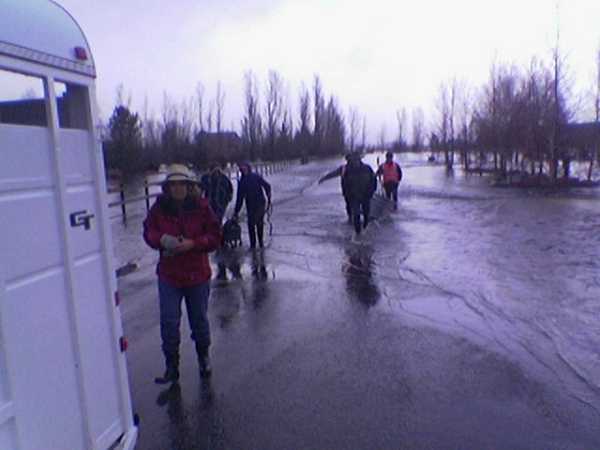
- Always assess the scene - get the big picture. What is going on that you see, and what is likely going on that you don't see?
- Job-1 is establishing scene safety. Mitigate hazards such as other animals at-large. Establish a "hot zone" and do not let anyone who is not actively engaged in necessary technical tasks enter that zone.
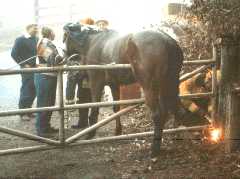
- Control noise and chaos as best you can as such stimulus only adds to stress in the animal.
- Organize yourself and those other persons present. Identify a clear objective. Devise a rational plan of action that everyone can understand. Communicate that plan.
- Multiple "bosses" usually produce a chaotic rescue effort. One person should be in charge of the rescue operation. This person should be the most technically proficient of those present. This person should not be the animal's owner or someone with an emotional interest in the animal as emotion has proved to cloud objectivity and rescue efficiency.
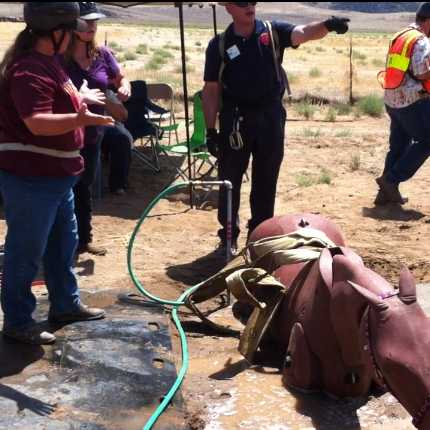
- Operational safety is critical. People tend to get focused on rescue activities and often don't recognize hazardous situations. One person must be assigned as Safety Officer whose responsibility is to identify hazards and not allow anyone into any unreasonably risky situations. Everyone on the scene must adhere to safety commands or they should be removed for the well being of the remainder of the rescue team.
- Determine what human and technical resources you need. Order those resources and get them on the way. In most scenarios, a veterinarian capable of sedating the animal is warranted.
- Plan your work and work your plan unless the plan is not producing positive results.
- "Specialists" should not engage in general rescue tasks. For example, the veterinarian should only do necessary veterinary work. It is bad judgment to allow the only veterinarian on-scene to potentially get injured doing tasks that non-specialists are capable of doing.
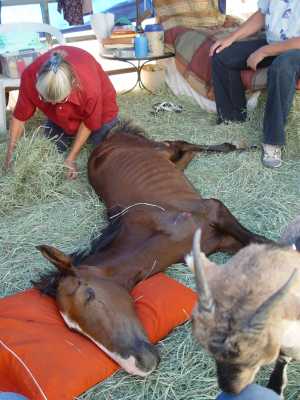
- Work methodically. Follow relevant protocols. Regularly check your work and constantly evaluate your progress.
- Consider the effects of environmental factors on the animal and rescuers. Excessive heat and cold can significantly effect an operation that takes more than a few minutes to complete.
- If a situation becomes chaotic, it's important for us to ask ourselves if we are still thinking or if we are reacting. If a bunch of boulders are crashing down on us we need to react. However in most rescue operations we need to logically think about how to best deal with a fluid situation.
- Train and operate based on interagency and intergroup teamwork. Significant large animal emergencies can require a large "work force" provided by multiple sources. Technical rescue is no place for egos and kingdoms. Training that produces effective results in the field should involve the collaboration and participation of the groups and entities that would likely have to work together to resolve a significant emergency.
- At the end of each emergency operation or exercise, conduct an evaluation. Technical rescue is a constantly evolving science. Determine what procedures or what equipment could be improved upon.
|
|
This web feature is presented for illustrative purposes only. It is not intended, nor should it be received as, a substitute for formal hands-on training.
Due to the excessive heat and the fact that one exercise illustrated in this series was conducted using a mannequin, some leeway was given to the wearing of helmets. During actual rescues, during any exercises involving live animals, and during exercises with mannequins when any overhead equipment is operating, the use of proper helmets is mandatory.
|
It was so hot that Nigel had to be cooled off as he would become too hot to touch!
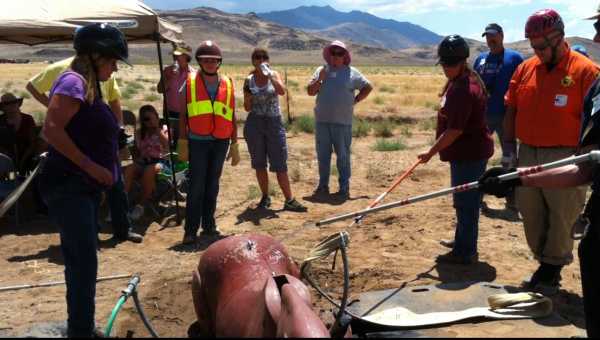
|
Evacuations can be particularly chaotic and require a greater degree of overhead control.
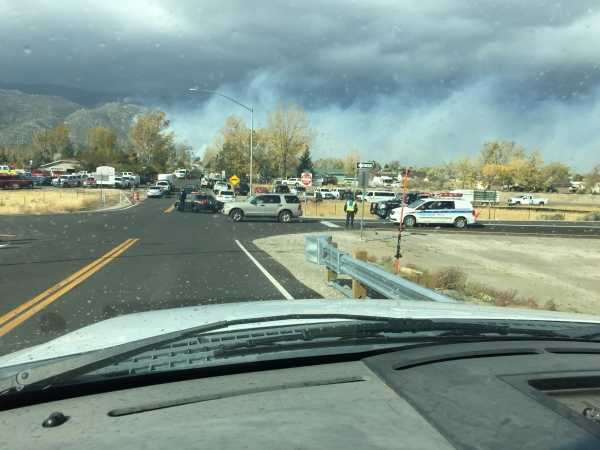
Don't self deploy. If a threat is appearing get prepared and ensure that all equipment and personal protective equipment (PPE) are ready for service. If you receive a "peer to peer" request (one directly from a private animal owner,) check in and get authorization before entering any emergency operations area. Incident commanders and security personnel have a responsibility to know who is operating in the emergency zone.
Assigned staging areas are where teams should assemble, prepare and rest between assignments.
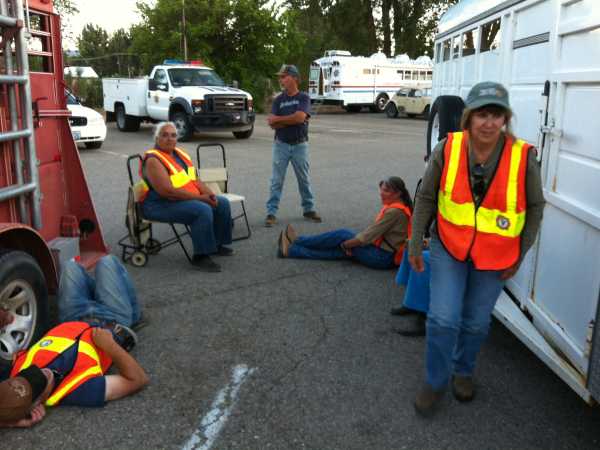
- Organize into formal Strike Teams or Task Forces. These resources can be pre-planned and information provide to authorities so that they will be aware of the availability of such resources.
- Follow Incident Command System (ICS) protocols. ICS provides a means for all of the various resources working at incidents to effectively operate collaboratively. These protocols include proper means of "checking in," staging until assigned missions, personnel accountability, communications and record keeping and demobilization.
- Units operating in Strike Teams or Task Forces should have some reliable means of common communications. Don't rely on mobile phones during significant emergencies.
- Strike Team or Task Force Leaders should have some reliable means of communicating with incident superiors.
- Safety Officers are necessary during operations in forward positions, particularly if the incident could threaten operational safety.
- Always be aware of more than one route of egress. If you don't know the area well, carry an accurate map or use a pilot car that has a driver familiar with the area.
- Always employ "work it or leave it" decision making. We want to solve all the problems. The truth is that we can't. Wasting time on lost causes puts responders at unnecessary risk and ties up resources that could better be used on more achievable missions.
- When operating at complex incidents the Incident Action Plan (IAP) may not seem perfect, however incident commanders are often aware of conditions for which field responders are unaware. Adapt as conditions warrant but operate within the parameters of the IAP.
- Consider that some incidents may actually be crime scenes. Unauthorized activity in a crime scene could result in responder sanctions.
- ALWAYS REMEMBER: You can't be the rescuer if you end up being the one needing rescue!
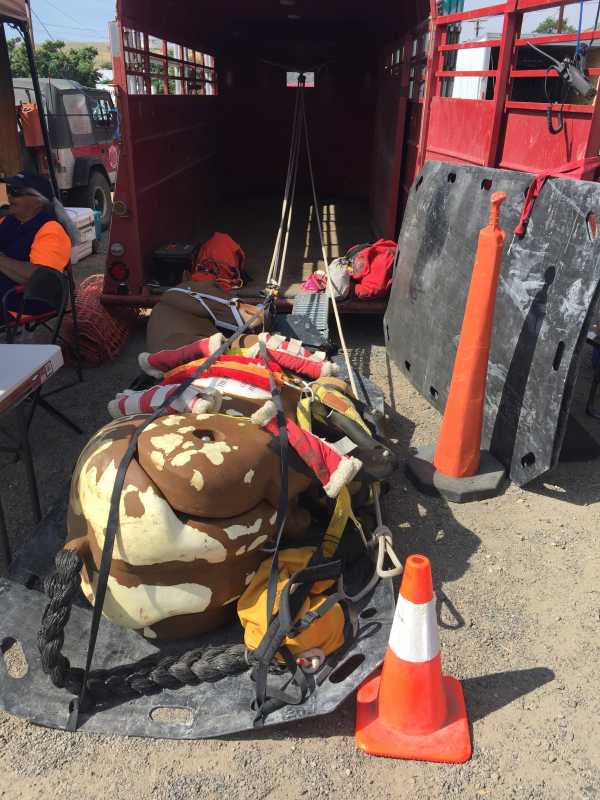
|

The training information presented in these information sheets and guides is offered for illustrative and volunteer refresher purposes only. It is not a substitute for actual hands-on training.
|
Press Back to return to the page which brought you here
|











